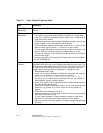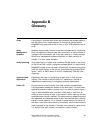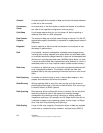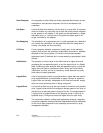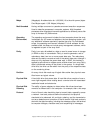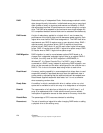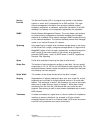B-5
Copyright © 2002 by LSI Logic Corporation. All rights reserved.
Mbyte (Megabyte) An abbreviation for 1,000,000 (10 to the sixth power) bytes.
One Mbyte equals 1,000 Kbytes (kilobytes).
Multi-threaded Having multiple concurrent or pseudo-concurrent execution sequences.
Used to describe processes in computer systems. Multi-threaded
processes allow throughput-intensive applications to efficiently use a disk
array to increase I/O performance.
Operating
Environment
The operating environment includes the host computer where the array
is attached, any I/O buses and adapters, the host operating system, and
any additional software required to operate the array. For host-based
arrays, the operating environment includes I/O driver software for the
member disks, but does not include array management software, which
is regarded as part of the array itself.
Parity Parity is an extra bit added to a byte or word to reveal errors in storage
(in RAM or disk) or transmission. Parity is used to generate a set of
redundancy data from two or more parent data sets. The redundancy
data can be used to reconstruct one of the parent data sets, although it
does not fully duplicate the parent data sets. In RAID, this method is
applied to entire drives or stripes across all disk drives in an array. Parity
data is distributed among all the drives in the system. If a single disk
drive fails, the drive can be rebuilt from the parity of the respective data
on the remaining drives.
Partition An array virtual disk made up of logical disks rather than physical ones.
Also known as logical volume.
Physical Disk A hard disk drive that stores data. A hard disk drive consists of one or
more rigid magnetic discs rotating about a central axle with associated
read/write heads and electronics.
Physical Disk
Roaming
The ability of some adapters to detect when disk drives have been
moved to a different slot in the computer—for example, after a hot swap.
Protocol A set of formal rules describing how to transmit data, especially across
a network. Low level protocols define the electrical and physical
standards to be observed, bit- and byte- ordering, and the transmission
and error detection and correction of the bit stream. High level protocols
deal with the data formatting, including the message syntax, the terminal-
to-computer dialogue, character sets, and sequencing of messages.




